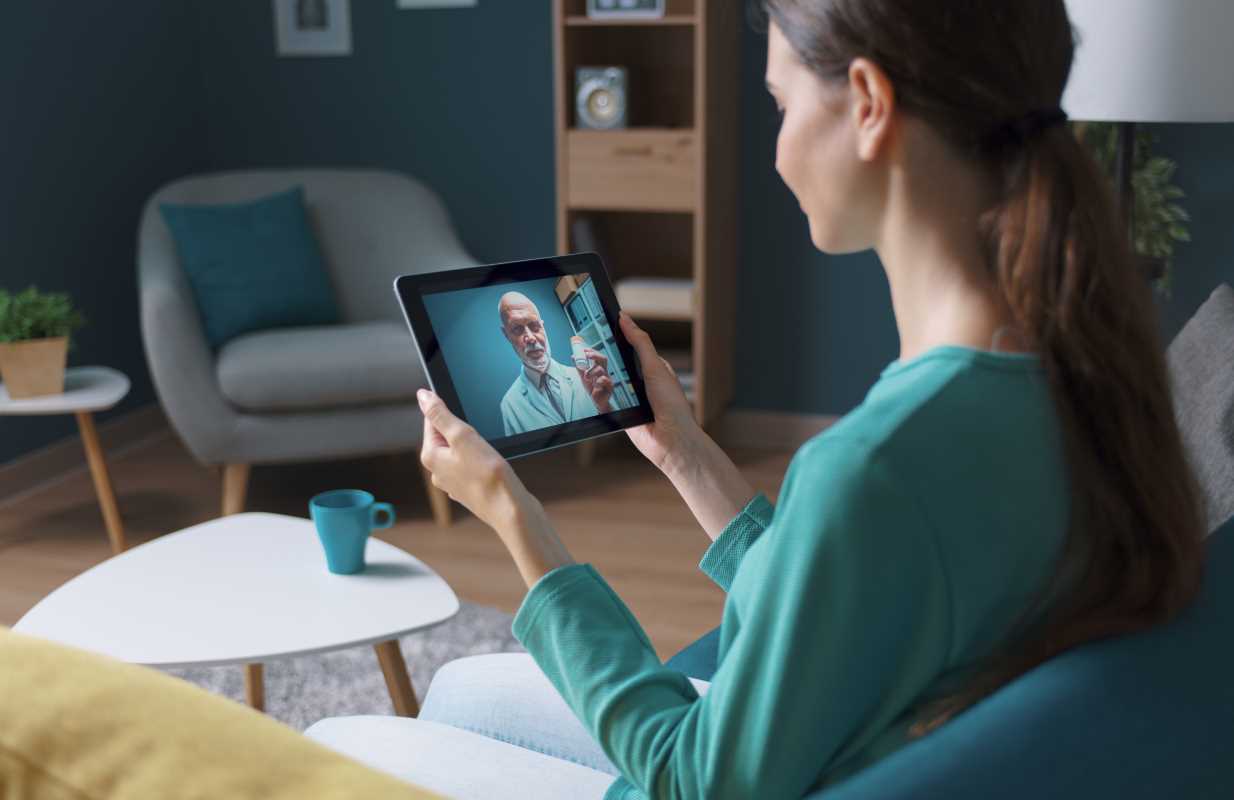With the rapid advancement of technology, innovative solutions are constantly being developed to improve various aspects of our lives, including our health. From wearable devices to virtual reality therapy, modern inventions are revolutionizing the way we approach healthcare and wellness. These groundbreaking technologies are not only making healthcare more accessible and efficient but are also empowering individuals to take greater control over their health. Let's explore some of the most significant inventions that are making a positive impact on our health and well-being.
1. Robotic Surgery: Precision and Control in the Operating Room
Robotic surgery has transformed the field of medicine by providing surgeons with unprecedented precision, flexibility, and control during procedures. This technology involves the use of robotic arms controlled by a surgeon from a console, which offers high-definition, 3D views of the surgical site. The robotic system translates the surgeon's hand movements into precise movements of tiny instruments inside the patient's body, enabling minimally invasive surgeries with enhanced accuracy.
One of the most well-known robotic surgery systems is the da Vinci Surgical System, which has been widely adopted in procedures ranging from prostatectomies to cardiac surgeries. Studies have shown that robotic surgery results in less pain, scarring, and blood loss compared to traditional open surgery. Additionally, patients often experience shorter hospital stays and faster recovery times, allowing them to return to their normal activities more quickly.
The precision of robotic surgery also reduces the risk of complications and improves surgical outcomes. For example, in delicate surgeries such as those involving the brain or spine, the robotic system's steady movements can minimize the potential for human error. As robotic surgery technology continues to advance, we can expect to see even more complex procedures being performed with greater accuracy and efficiency.
2. Artificial Intelligence in Healthcare: Revolutionizing Diagnosis and Treatment
Artificial intelligence (AI) is rapidly becoming a cornerstone of modern healthcare, offering the potential to revolutionize how we diagnose and treat diseases. AI algorithms can analyze vast amounts of medical data, including electronic health records, medical images, and genetic information, to identify patterns and trends that may be missed by human healthcare providers.
One of the most promising applications of AI in healthcare is in diagnostics. For example, AI-powered systems are being used to detect early signs of diseases such as cancer, heart disease, and diabetes. In radiology, AI algorithms can analyze medical images with a level of detail and accuracy that rivals that of experienced radiologists, leading to earlier and more accurate diagnoses. Additionally, AI can assist in predicting patient outcomes and tailoring treatment plans to individual patients, improving the effectiveness of therapies.
AI is also being integrated into patient care through chatbots and virtual assistants, which provide personalized health advice, reminders, and support 24/7. These AI-powered tools can help patients manage chronic conditions, adhere to medication regimens, and access information about their health, reducing the burden on healthcare providers and improving patient outcomes.
As AI continues to evolve, it holds the potential to transform every aspect of healthcare, from research and drug development to personalized medicine and patient care. By harnessing the power of AI, healthcare providers can deliver more accurate, efficient, and personalized care to patients around the world.
3. Smart Wearable Devices: Empowering Individuals to Take Control of Their Health
Smart wearable devices, such as fitness trackers and smartwatches, are empowering individuals to take control of their health and fitness goals. These devices can monitor a wide range of health metrics, including heart rate, sleep patterns, physical activity, and even stress levels. By providing real-time data and insights, smart wearables encourage users to make healthier choices and stay proactive about their well-being.
For example, fitness trackers can help users set and track goals for daily steps, exercise, and calorie consumption, motivating them to stay active and maintain a healthy lifestyle. Some wearables are equipped with advanced sensors that can detect irregular heartbeats, potentially alerting users to early signs of conditions like atrial fibrillation, which can lead to stroke if left untreated.
Wearables are also becoming more integrated with healthcare systems, allowing healthcare providers to remotely monitor patients with chronic conditions. This continuous monitoring can help detect early warning signs of health issues, enabling timely interventions and reducing the need for frequent in-person visits. As wearable technology continues to advance, we can expect to see even more sophisticated devices that offer deeper insights into our health and well-being.
4. Telemedicine: Expanding Access to Healthcare
Telemedicine has become increasingly popular as a convenient and accessible way to receive medical care remotely. Through video calls, online consultations, and mobile apps, patients can connect with healthcare providers for diagnosis, treatment, and follow-up care without the need for in-person visits. This technology offers numerous benefits, including reduced wait times, lower costs, and improved access to specialist care, especially in rural or underserved areas.
The COVID-19 pandemic accelerated the adoption of telemedicine, as healthcare providers and patients sought safe and effective ways to deliver and receive care while minimizing the risk of infection. Telemedicine proved to be a vital tool for managing chronic conditions, conducting mental health therapy sessions, and even providing urgent care services.
Beyond the pandemic, telemedicine is expected to continue playing a critical role in the healthcare landscape. It offers a solution to the growing demand for healthcare services, particularly as the global population ages and the prevalence of chronic diseases increases. By expanding access to care and reducing barriers such as transportation and geographic location, telemedicine is helping to create a more equitable healthcare system.
5. 3D Printing in Healthcare: Customization and Innovation
3D printing technology is revolutionizing healthcare by enabling the creation of personalized medical devices, prosthetics, and even human tissues and organs. This technology allows for the production of customized implants and surgical guides that fit a patient's unique anatomy, leading to better surgical outcomes and faster recoveries.
For example, 3D-printed implants and prosthetics can be tailored to the exact specifications of a patient's body, improving comfort and functionality. Surgeons can use 3D-printed models of organs or bones to plan complex surgeries with greater precision, reducing the risk of complications and improving patient outcomes.
One of the most exciting developments in 3D printing is bioprinting, which involves the use of living cells to create tissues and organs. Researchers are exploring the potential of bioprinting to create functional organs for transplantation, which could one day address the critical shortage of donor organs. While this technology is still in its early stages, the potential for bioprinting to transform organ transplantation and regenerative medicine is immense.
In addition to medical devices and implants, 3D printing is being used to create custom surgical tools, drug delivery systems, and even personalized medications. As 3D printing technology continues to advance, it is poised to become an integral part of modern healthcare, offering new possibilities for customization, innovation, and improved patient care.
6. Virtual Reality Therapy: A New Frontier in Mental Health and Rehabilitation
Virtual reality (VR) therapy is emerging as a promising tool for managing pain, anxiety, and phobias in healthcare settings. By immersing patients in interactive and engaging virtual environments, VR therapy distracts them from discomfort and helps alleviate symptoms.
In pain management, VR therapy has been shown to reduce the need for pain medication by providing an immersive experience that diverts the patient's attention away from pain. For example, patients undergoing burn treatment or physical therapy may use VR to engage in virtual activities that make the painful procedures more tolerable.
VR therapy is also being used in mental health treatment, particularly for conditions such as anxiety disorders, PTSD, and phobias. Patients can be gradually exposed to their fears in a controlled virtual environment, allowing them to build resilience and reduce their anxiety over time. This approach, known as exposure therapy, has been shown to be highly effective in treating a variety of mental health conditions.
In rehabilitation, VR is being used to help patients regain motor skills and cognitive function after a stroke or injury. By engaging patients in virtual tasks that mimic real-world activities, VR therapy can enhance the rehabilitation process and improve outcomes.
As VR technology becomes more advanced and accessible, it is expected to play an increasingly important role in healthcare, offering new ways to treat pain, anxiety, and other conditions.
The Future of Healthcare Is Here
Innovative solutions are playing a crucial role in transforming the healthcare landscape and improving our overall health and well-being. From robotic surgery and artificial intelligence to smart wearables, telemedicine, 3D printing, and virtual reality therapy, modern inventions are enhancing the quality of care, expanding access to medical services, and empowering individuals to take charge of their health.
As technology continues to evolve, we can look forward to even more game-changing inventions that will revolutionize the way we approach healthcare in the future. The integration of these technologies into everyday healthcare practices is not only improving patient outcomes but also making healthcare more personalized, efficient, and accessible. By embracing these innovations, we can create a healthier, more connected world where everyone has the opportunity to live their best life.
(Image via Adobe)
 (Image via
(Image via





